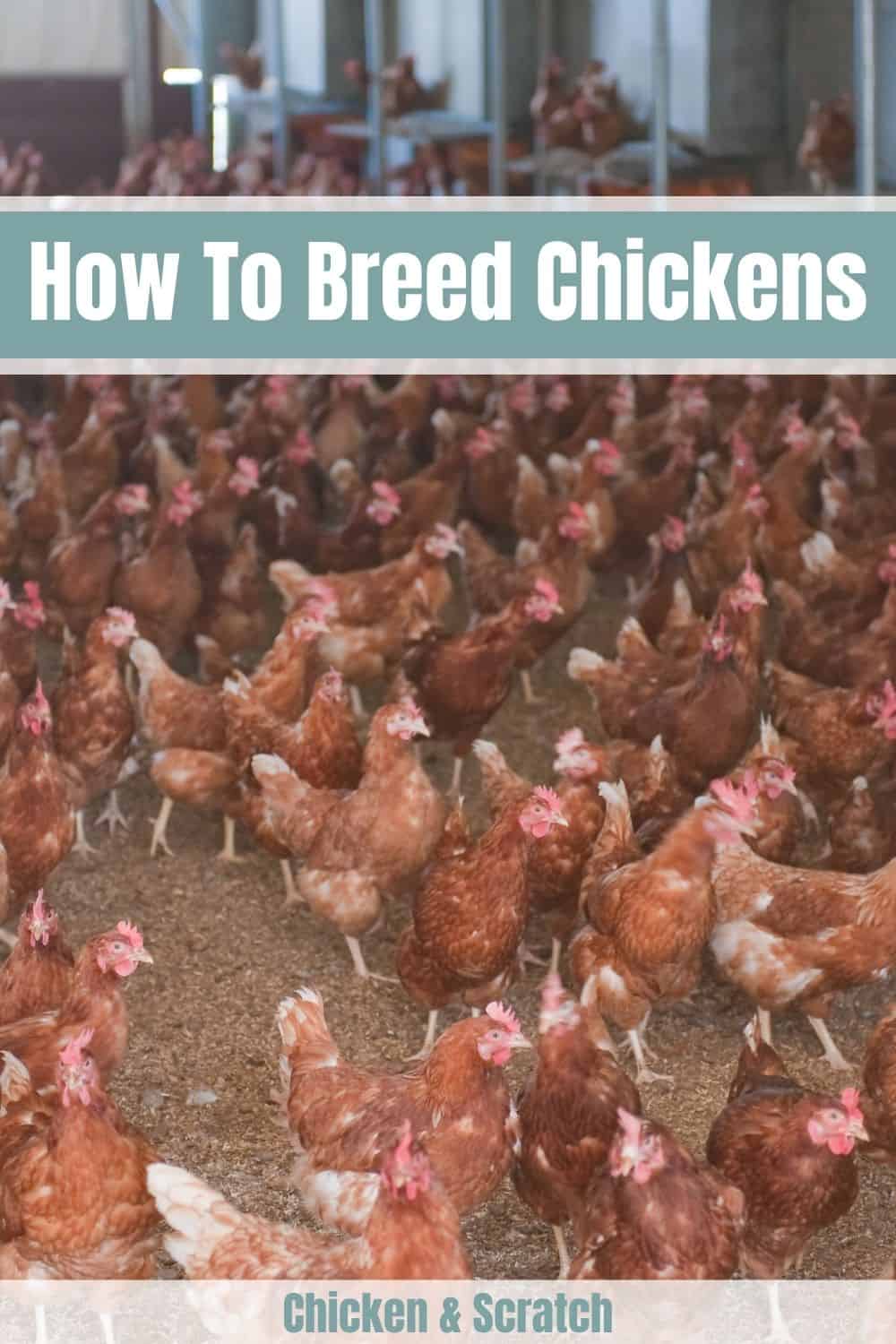People who are at ease handling their flocks may decide to learn how to breed chickens. And whether they want more fowl in their coop or want to sell chickens for profit, these people all need to know how to raise chickens.
This article will cover
- Ways On How To Breed Chickens
- Main Breeding Chicken Methods
- Other Ways to Breed Chickens
- The Advantages of Breeding Chickens
- Breeding Nutrition
- 8 Tips On Breeding Chickens
Ways On How To Breed Chickens

Breeding chickens is more challenging than it appears for many backyard keepers. That’s why planning and developing foolproof methods on how to breed chickens can progress the complete quality of their poultry while also generating another source of income. TThere are precise steps and procedures breeders should follow to control the end product for fowl breeding to guarantee that the process is successful.
There are a couple of reasons to breed fowls. Some chicken keepers breed for meat, others for more eggs to sell, to feed a growing family, or replace their mature layers. The knowledge to keep and raise chickens is vital, especially when having self-sustaining poultry.
But before you begin to breed fowls, a plan of action is an utmost necessity.
Why do you need to breed chickens?
Do you have more than enough time to artificially help your chickens along the process?
If not, do you trust your hens can do it all for you?
You may also research the best chickens available in your area if you plan on backyard breeding.
All these questions and more get involved in the breeding mix. Still, you may want to begin the chicken breeding process with your specific goal in mind, the best fowls available to you, and your notes.
Main Breeding Chicken Methods
There are two most famous and standard chicken breeding methods:
Flock Breeding
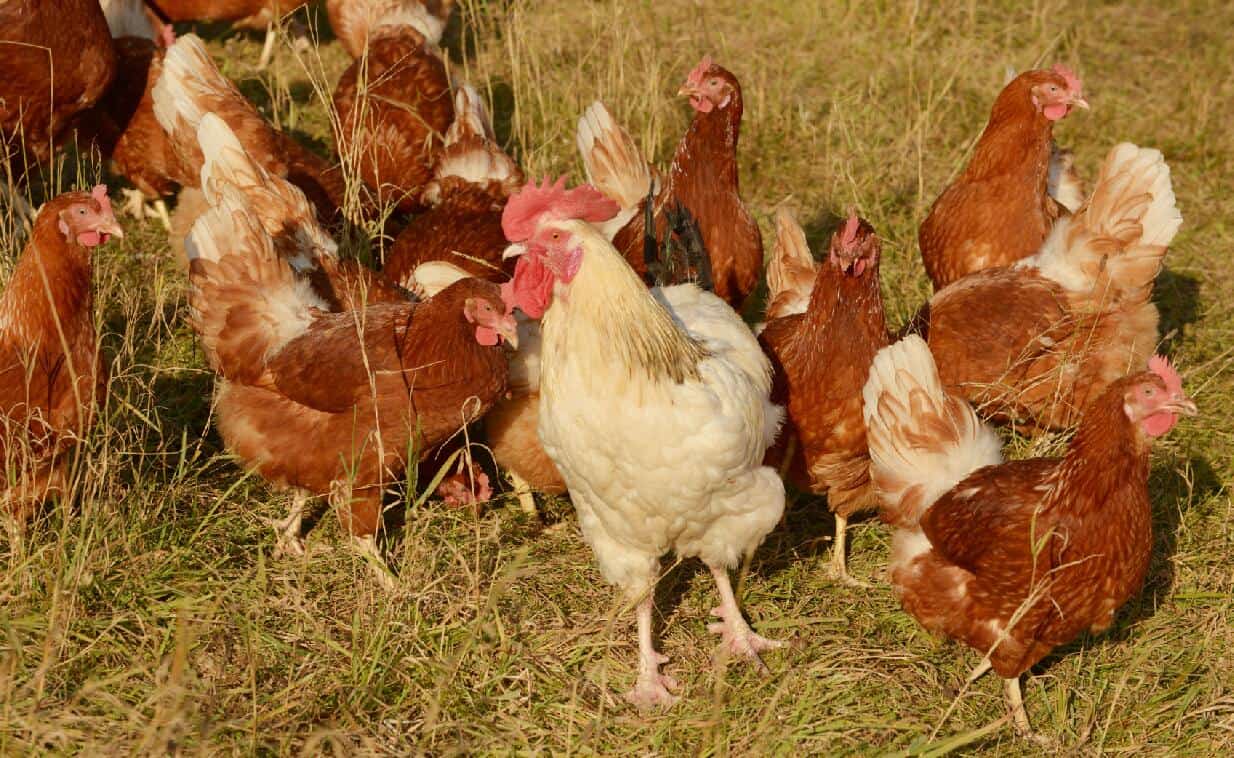
Flock breeding or natural mating is the most common method for chicken breeders as it provides you the chance to produce at random with a couple of hens with only one cock. This method is the easiest for chicken breeders.
The natural breeding process of chickens involves a cockerel courting a hen when she comes into season, usually about once per month. Courtship begins with the cockerel strutting around the hen and engaging in courtship displays, such as fanning his tails, puffing out his feathers, and producing different types of vocalizations that seek to gain the hen’s attention.
Once the mating is finished, hens will begin to lay eggs on a weekly basis until they enter into a period of molting. Then if the hen is broody, it will choose to fertilize the egg.
Once fertilized, chicken eggs generally take around 21 days to hatch, although this can vary based on breed and temperature conditions. Typically the shell contains two inner membranes; these surround the egg yolk containing the chicks’ embryo inside it surrounded by amniotic fluid fully enclosed within two extra external layers allowing development during incubation.
Pedigree Breeding
Pedigree breeding or Selective breeding highlights chicken breeding to obtain specific characteristics. The method is to mate a particular rooster to a specific hen for the traits the breeder desires.
In this method, the breeder needs to take detailed notes when using more than one hen when breeding for a show with the Pedigree method. Your notes will provide you with the facts on a specific rooster mated with a specific hen and which chicks they produced. [How Do Chickens Mate?]
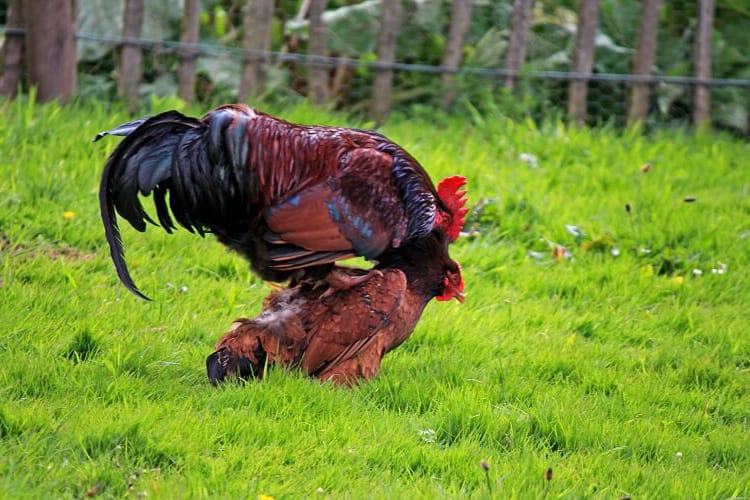
Other Ways to Breed Chickens
Here are other ways you can breed chickens:
Inbreeding
Inbreeding means breeding chickens that are very much related. It’s increasing the quality of good genes in successive generations. But, inbreeding will also increase genetic code problems.
When you breed two unrelated chickens, there is the slightest chance of having genetic problems. But sometimes, chickens have genetic problems concealed in their DNA. So when you breed two fowls who carry that genetic glitch, the likelihood of it appearing in the next generation escalates considerably.
However, the benefit of inbreeding is to help develop broods that are heritably the same, and it’s excellent if you want to produce quality fowls. Plus, the breeders can predict the appearance of the next generation depending on the parents. Unfortunately, fertility decreases if the breeder uses inbreeding for too long.
Line Breeding
This breeding is when you produce offspring from father to daughter or mother to son. Linebreeding is safer compared to breeding siblings. It’s also an excellent tool to set up a breeding flock when you only have one pair in your coop.
Outcrossing
When you present new genetics of the same breed to a reputable line is outcrossing. Outcrossing breeding is an advantage when you want to modify a sub-standard trait of a species, such as to change a feathering issue or body type.
This breeding tool is to produce the same breed but with new genetics. It’s like outcrossing your American Game Fowl to an unrelated line of the same species that doesn’t carry any sub-standard aspect your line is laid up with. Breeders should be careful with this breeding method as the new genetic code may also hide problems within the DNA.
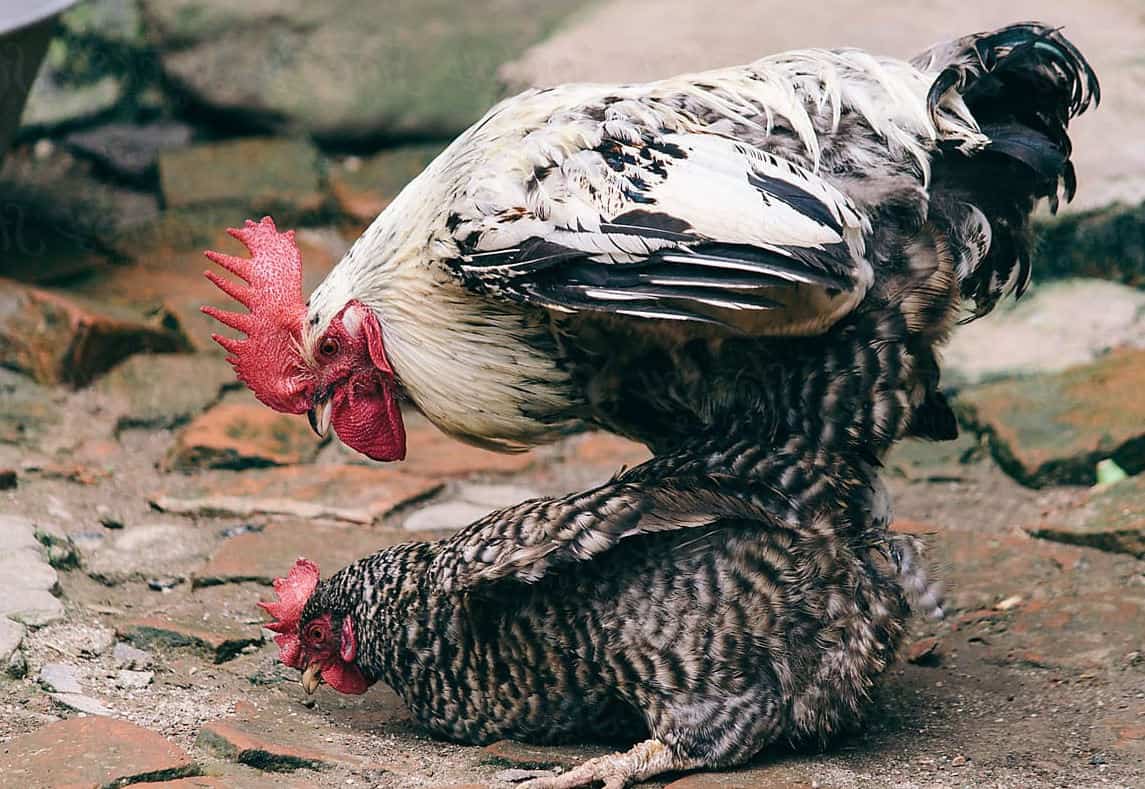
Artificial Insemination
Artificial insemination is a method used by breeders to increase the efficiency of propagation and breeding, frequently in commercial operations. When a male chicken’s semen is collected and deposited directly into the reproductive tract of a female chicken.
It allows breeders to take advantage of superior genetics from particular males that can help control breeding ratios and minimize disease transmission which can’t always be done with natural mating. It’s commonly used in large-scale commercial operations and breeding programs.
Crossbreeding
When you breed two chickens of different breeds is crossbreeding. It’s a tool to develop new species to correct genetic problems. A heritage breed can be crossbred with a high egg-production chicken to increase egg-laying.
Crossbreeding involves pairing different breeds or lines of chickens together in order to bring out certain coveted characteristics. This genetic mutation can include higher growth rates, increased egg production, or improved resistance to diseases. This is often done with the expectation that this ‘crossing-over’ will create a hybrid effect and thus make the offspring more productive than either of the parent species on their own.
The Advantages of Breeding Chickens

There’s this sense of pleasure for a chicken breeder to witness a chick develop from an egg up through hatching and into becoming a beautiful hen. But, a lot of backyard breeders don’t have the proper equipment to accomplish it.f
However, chicken breeders don’t essentially need to take advantage of artificial breeding and incubators. You can rely on your hens to accomplish the process.
Here are some benefits of breeding fowls:
Fresh eggs and meat
Breeding chickens are divided into three groups: breeding for meat, egg production, and show birds. But having fresh table birds and eggs are two of the most apparent benefits of having a backyard flock.
One hen can provide you with up to 300 eggs per year or deliver excellent meat quality when you care for and feed your chickens properly. More so, it’s a great pride to know the pedigrees of the food on your table.
Pets with Benefits
Depending on your town or city’s ordinances and your free space, your chickens can be in a coop with an outdoor run or be in a free-range environment. Nevertheless, your chickens can provide a boost to the soil’s health by tilling it with their beaks and feet, plus naturally fertilizing the ground. More so, chickens help control the insects in your yard.
Backyard Entertainment
No breeder would claim they don’t get any entertainment watching their flock of hens from their backyard. Even with helping the chicks establish into their brooder, a chicken keeper enjoys every bit of taking care of their flock. Most fowl raisers have stories of their chickens’ unique traits. They can immediately learn each of their chickens’ noticeable characteristics.
Show Chicken Events
Aside from the meat and egg production and entertainment, many chicken breeders revel in exhibiting their fowls. The American Poultry Association compares the fowls to the American Standard of Perfection for their breed at certain events. The judges note bird scores for physical traits such as body conformation, feather quality, and color.
Breeding Nutrition
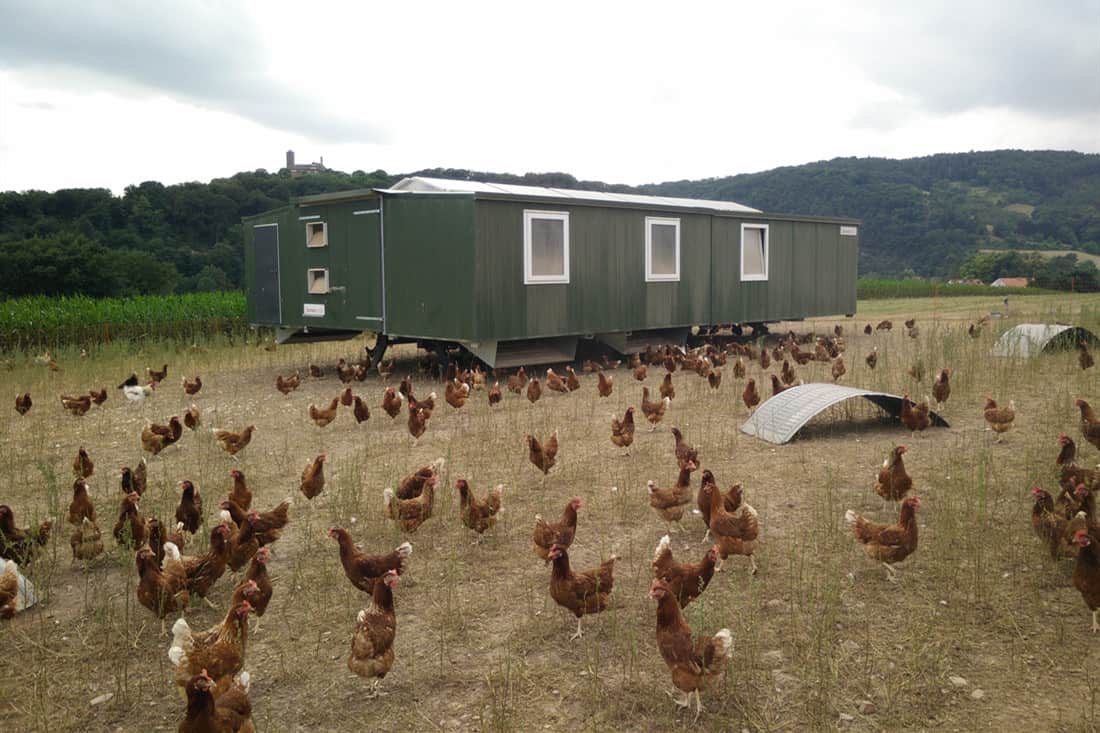
Chicken diet and nutrition will change with your goal of breeding chicken. Breeders will provide slightly different feeds to the broodies. You may replace your breeders with a higher protein layer feed when you want your hens’ eggs to fertilize. Higher protein such as Oyster Shell and layer feed will generate higher fertility and hatchability.
Broody Hens
During the broody period, the hens will not eat a whole lot, and most of them will not leave the nest on the first day or two. When a hen leaves her nest, it’s approximately 20 minutes max to eat, drink and poop before going back to her eggs.
So, it’s better to give her a high-protein Starter Chicken Feed, primarily because of her intermittent visits to the feeder. It’s the same food you would want to provide to the chicks when the eggs hatch.
You can also assist your broody hen by gently lifting her off the nest and setting her close to the feeder when it’s not eating or drinking. Chances are, your hen has been eating when you’re not around as well, so no worries even when it seems the mother is not interested in eating.

Chicken Supplements
During breeding and brooding, your chickens will not have as much energy as they usually do, so it’s best to supply them with the essential nutrients. However, never go overboard on the supplements for your chickens and their chicks.
When you have stunted growth in your chickens, dry eyes, or a high vulnerability to infections, it may all means that there is Vitamin A deficiency on your chickens’ diet. Add broccoli or kale to their feeds to prevent this deficiency.
Ensure your chickens have enough sunlight for more than 30 minutes a day and provide them with cod liver oil to avoid Vitamin D deficiency. This deficiency can affect your chickens’ egg production.
8 Tips On Breeding Chickens
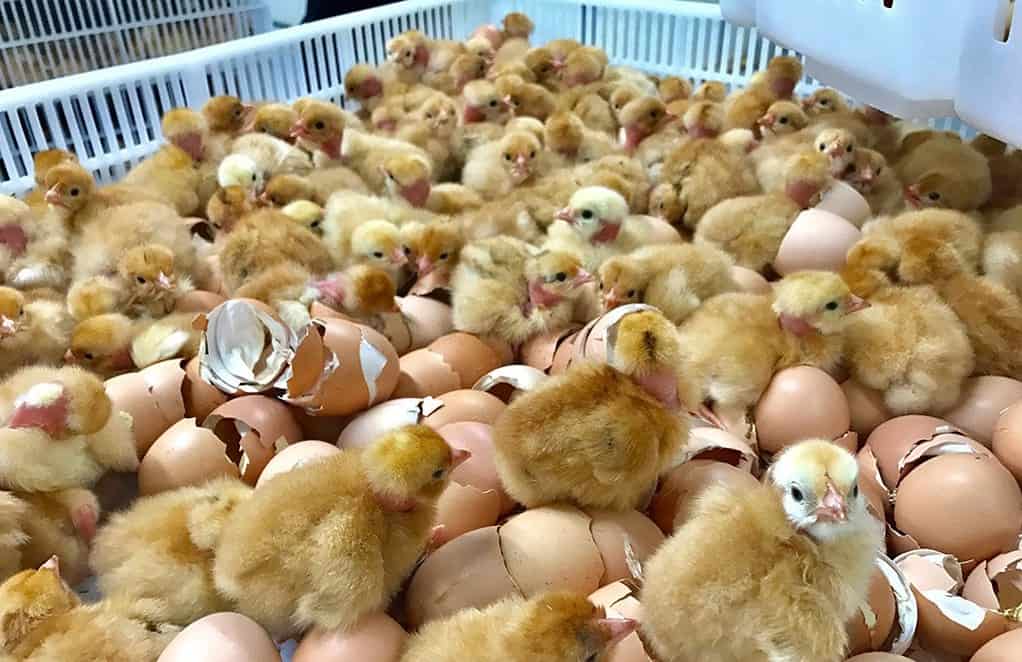
Here are some tip on breeding your chickens:
1. Selective Breeding
It matters what you choose to be your breeder. The chicken breeds you choose should be healthy, qualify for your production purposes, and have a suitable temperament. When you want to progress a specific chicken breed, choose varieties that contain the desirable traits of your selected strain. In short, only breed chickens with excellent health and characteristics.
2. Spring Time
Chickens tend to be more productive in spring seasons, especially in cold climates, even when many breeds can produce fertilized eggs all year round. Most fowls spend their energy during wintertime on keeping warm rather than on mating.
3. Rooster to Hen Ratio
Breeders should know that it’s not a good recommendation to have more than one cock in a flock. Roosters tend to create competitions for hens.
However, some roosters can coexist together if they’re raised collectively as long as there are enough hens for them as well. One rooster should get into four to five hens of its own. A higher fertility rate is an advantage of having more than one cock in a flock as well.
4. Keep Roosters with the Hens
When you decide which cock to breed to the hens, remove all other roosters and leave the chosen one with the hens for an indefinite period. Check every now and then if your rooster is doing its job. Eventually, it will mate with the hens without any extra effort with the breeder. If your cock is not doing its task, then maybe something is wrong.
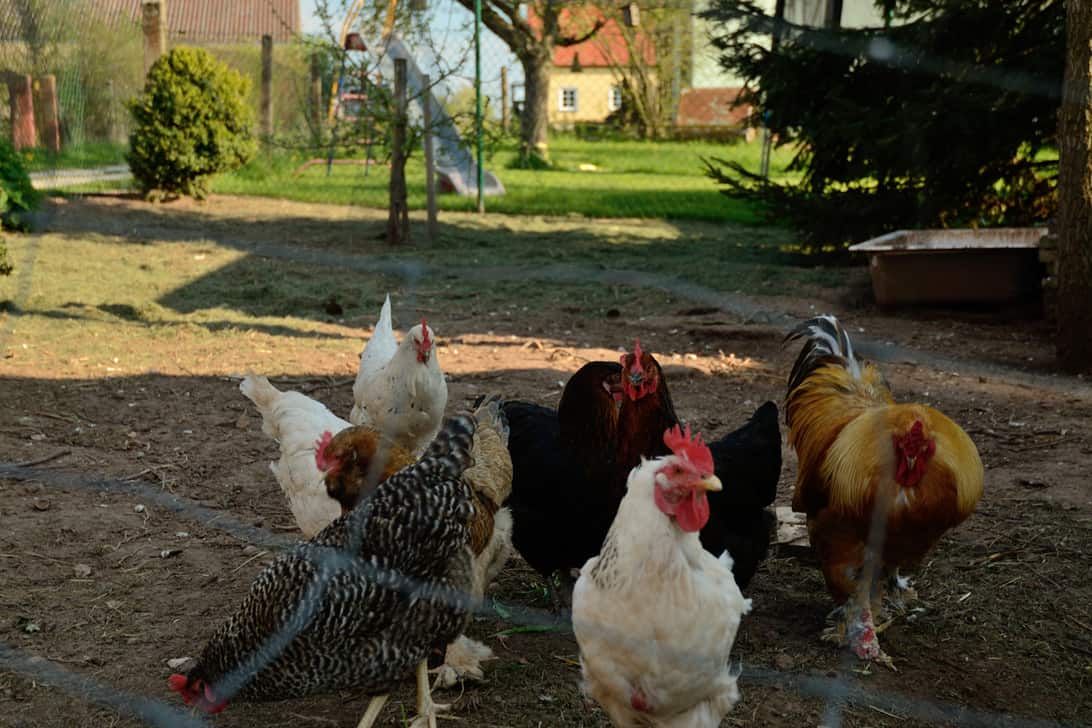
5. Waiting Time
Don’t expect fertile eggs for two weeks if you’ve just joined your rooster. For the next two to three weeks, the hens will continue to lay fertilized eggs by then.
6. Check on the Rooster’s Behavior
Some roosters can be more aggressive, and if your hens are losing feathers, or look like they’re awfully stressed out, or bloodied up, then your cock might be too aggressive. Stop the breeding method and introduce another rooster. It’s crucial to keep your hens’ physical and mental health at bay to keep them safe.
7. Eggs Fertilization
After two weeks, the eggs will have small white splotch like a bullseye which means the eggs are fertile. Then, a few days later, you’ll begin to notice red veins. [7 Easy Steps to Candling Chicken Eggs]
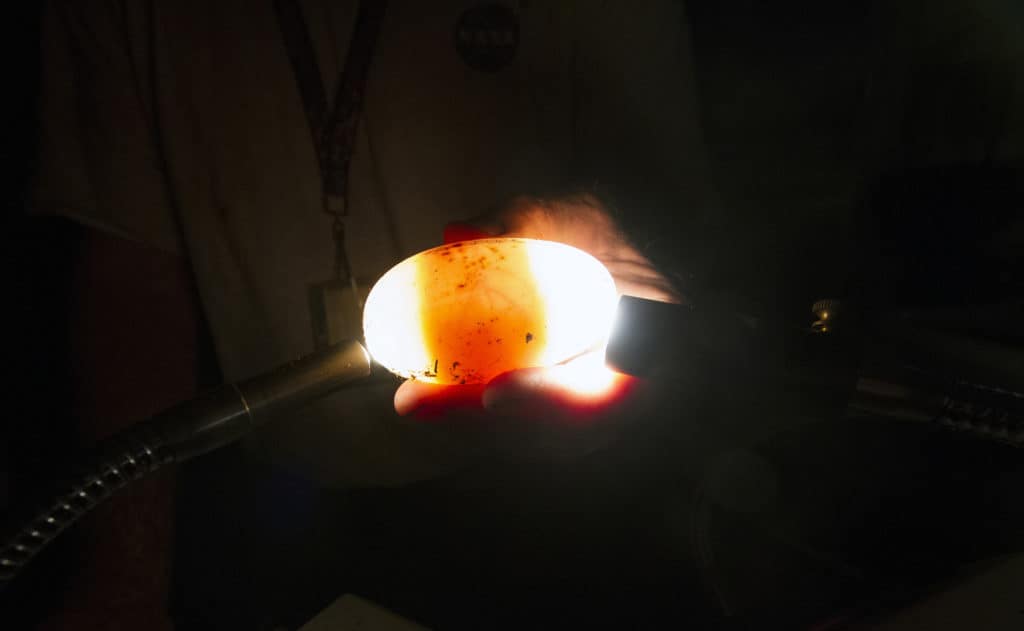
8. Storing and Setting Fertilized Eggs
Store eggs at 50 to 60 degrees Fahrenheit, with their pointy end down, for about a week. Then position them all in the incubator simultaneously.
This method will make the eggs develop all at the same time. Overall, these steps will give you a decent hatch rate. But anything longer than a week will drop the hatch rate.
Final Thoughts
There are surprisingly a lot of ways to multiply your flocks of chickens. Planning on how to breed chickens can be very exciting. The process is fun for the whole family to enjoy as well. The best output is to do your research and take notes.
In the end, it’s your decision what’s the best chicken breed to raise in your backyard. The most important thing is raising your chickens will fulfill your goal of breeding fowls in the first place.


Joseph Hudson has been raising chickens for over 15 years. In 2018, he completed the Agriculture & Natural Resources program at Mt. San Antonio College. He currently raises over 1400 chickens on his 7.5-hectare farm. He keeps sharing his experience on raising healthy and happy chickens on Chicken Scratch The Foundry.
